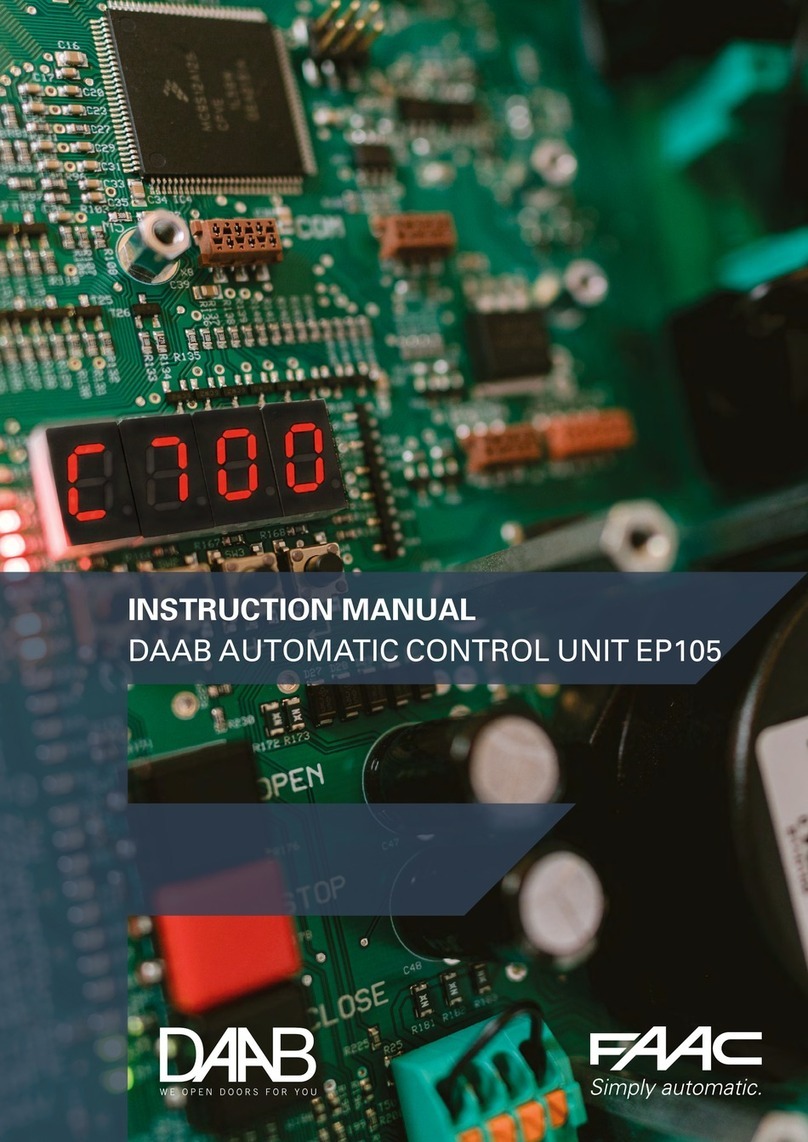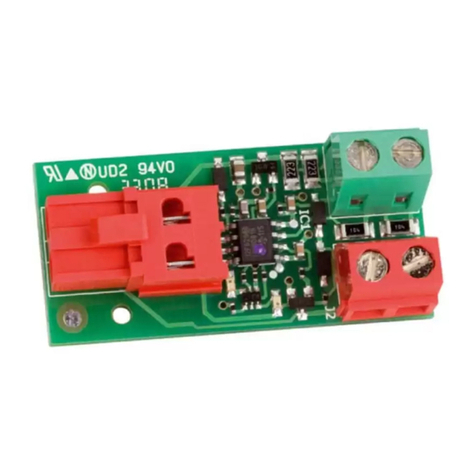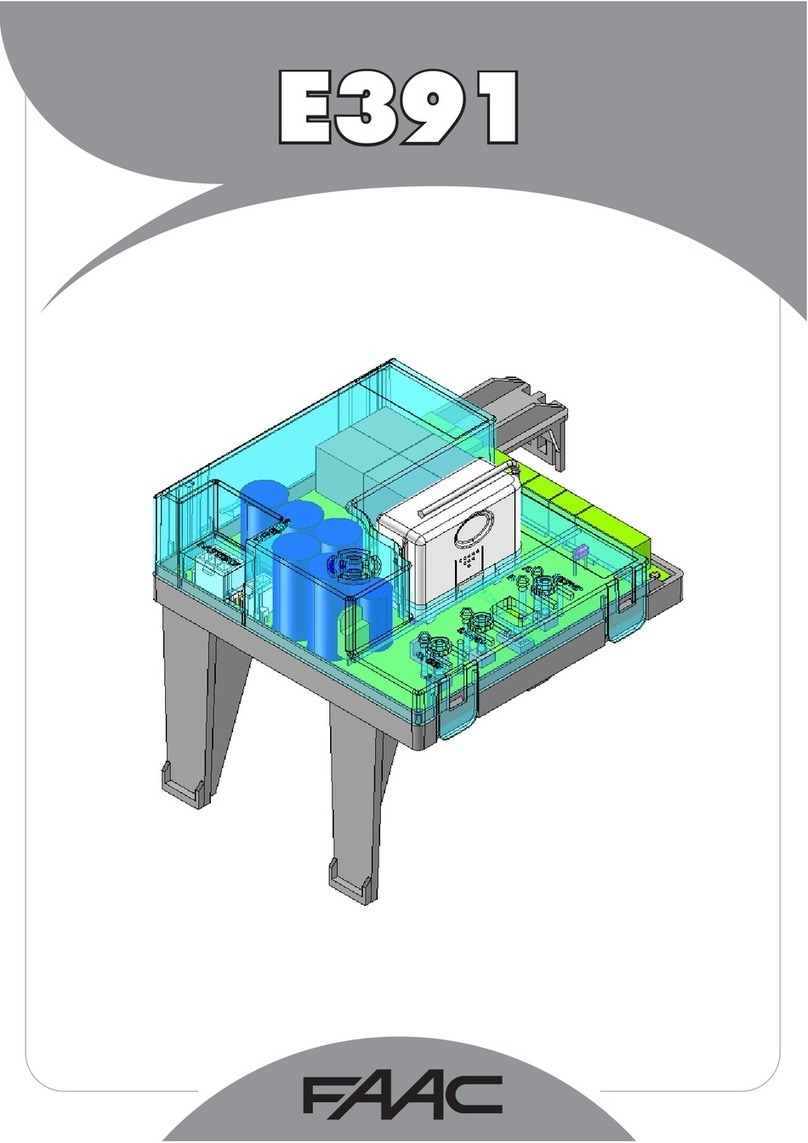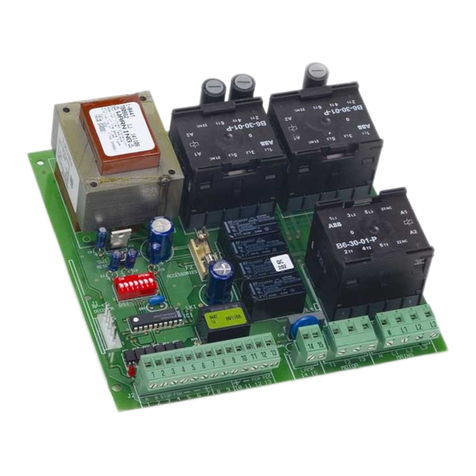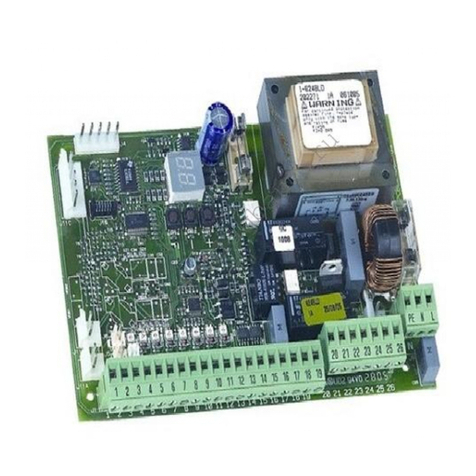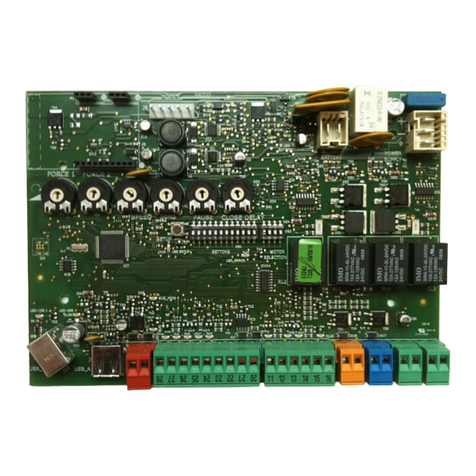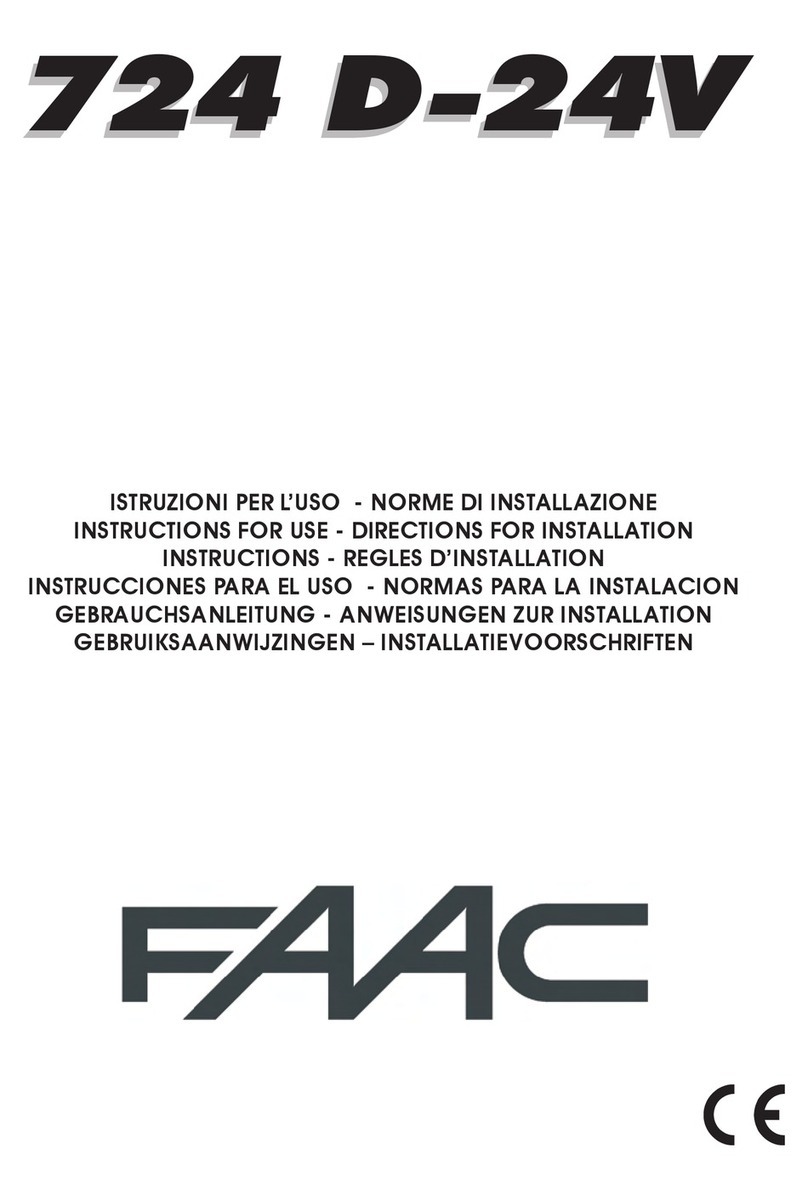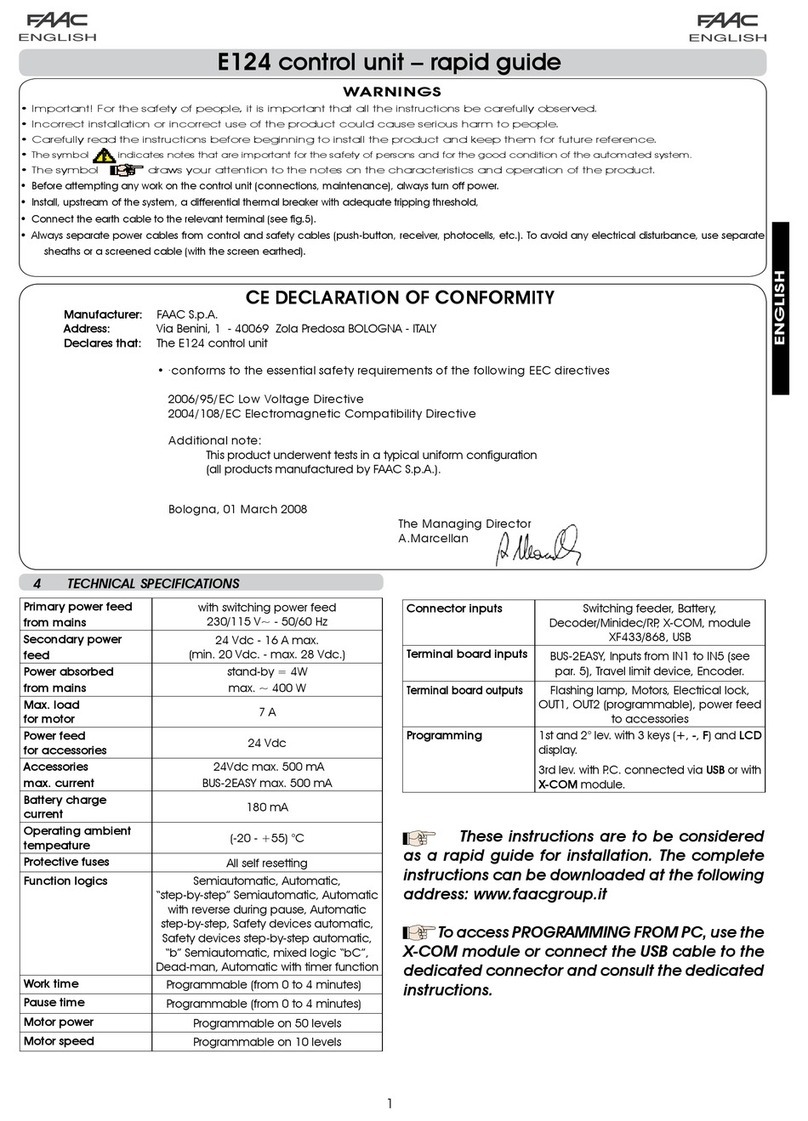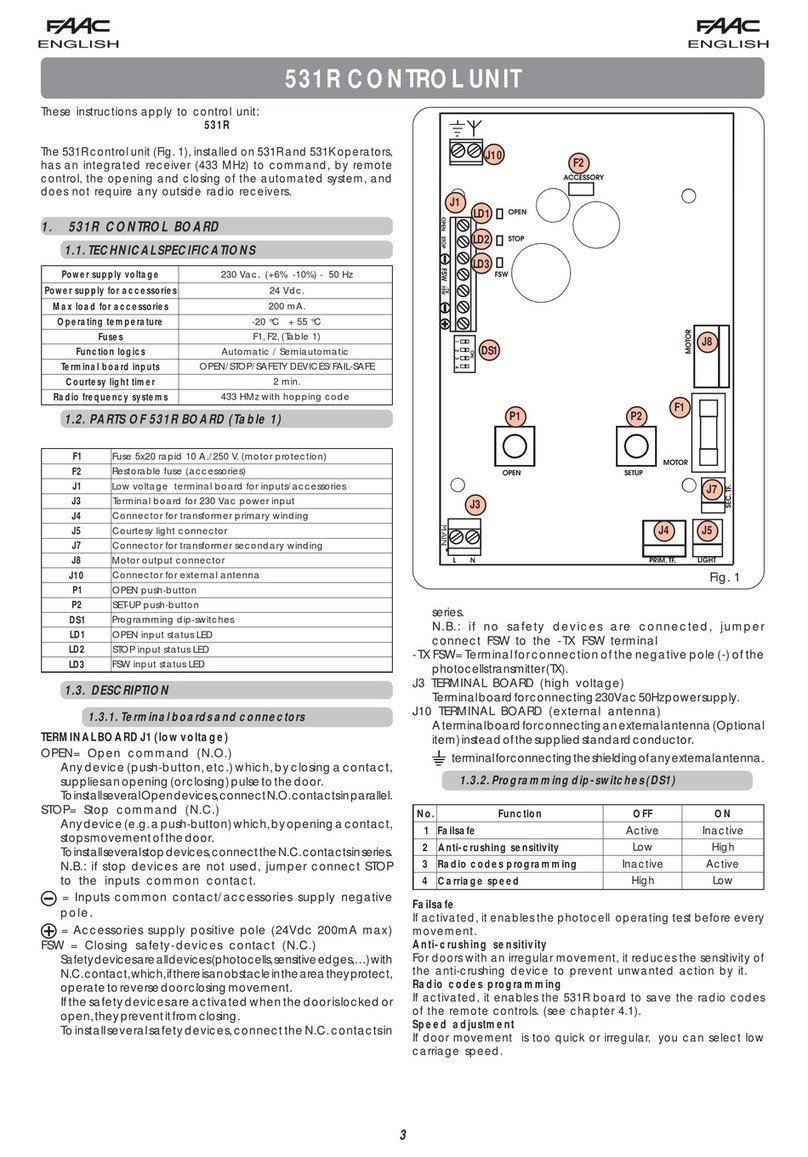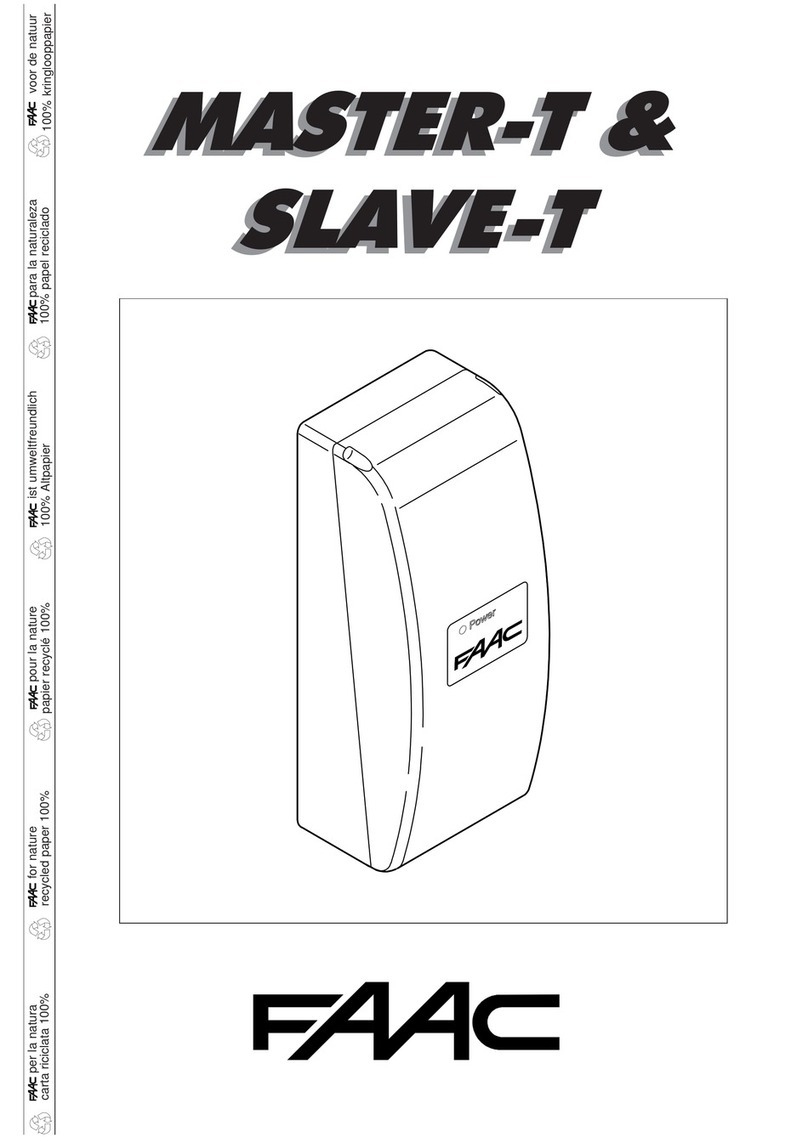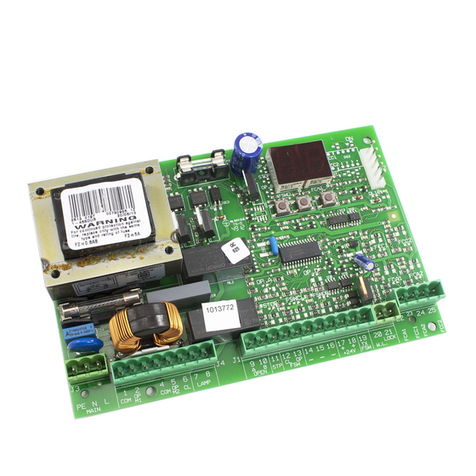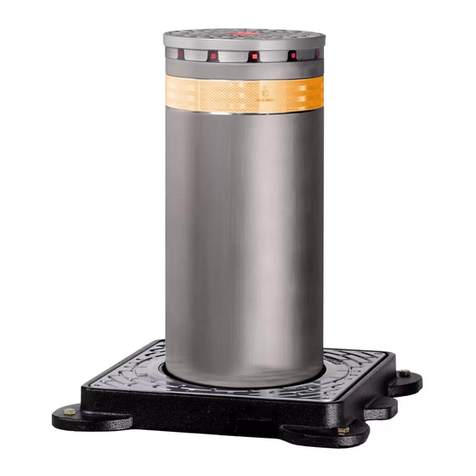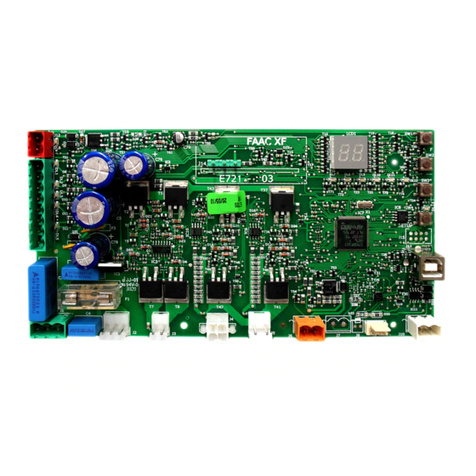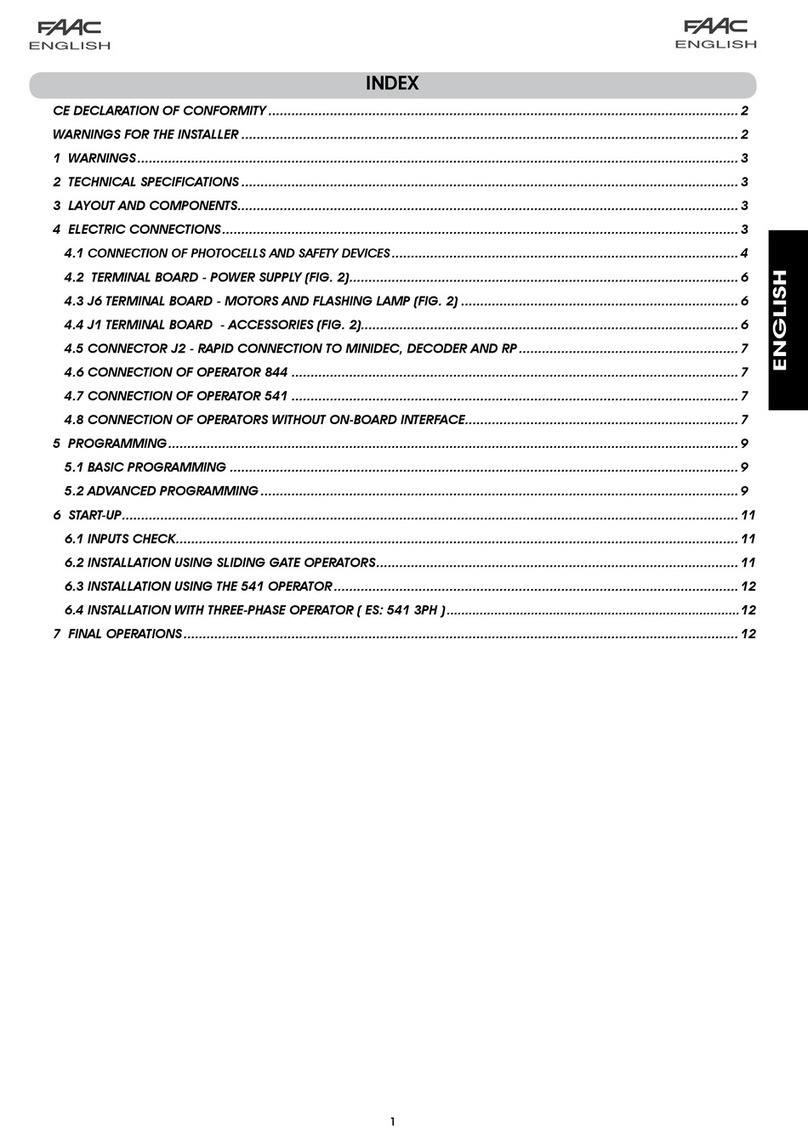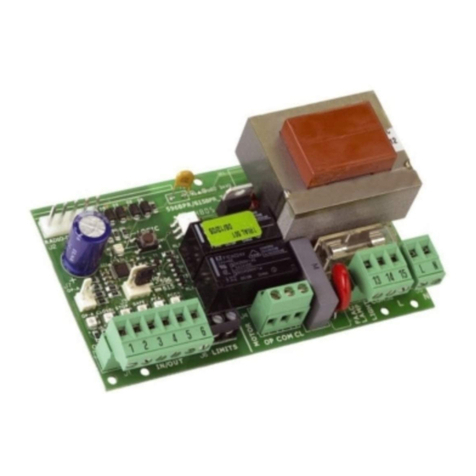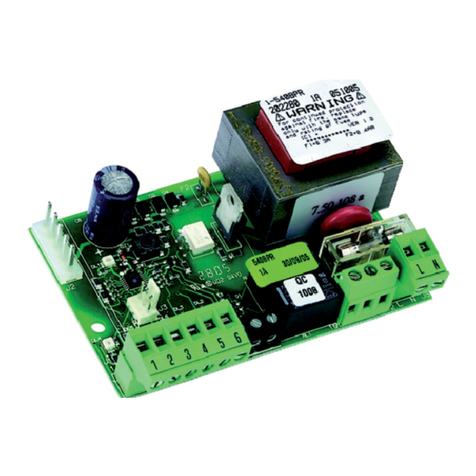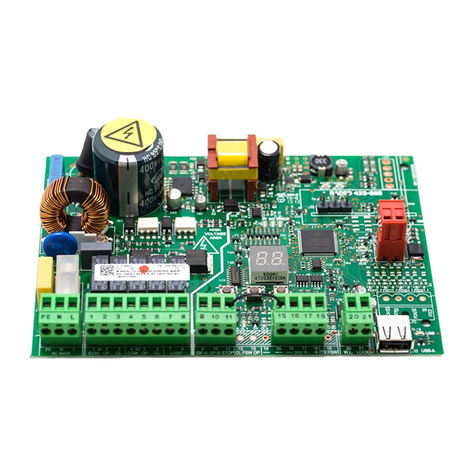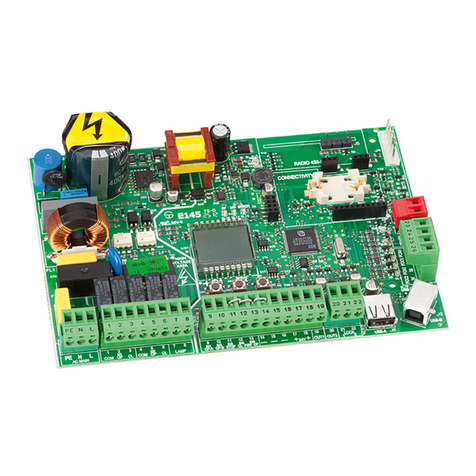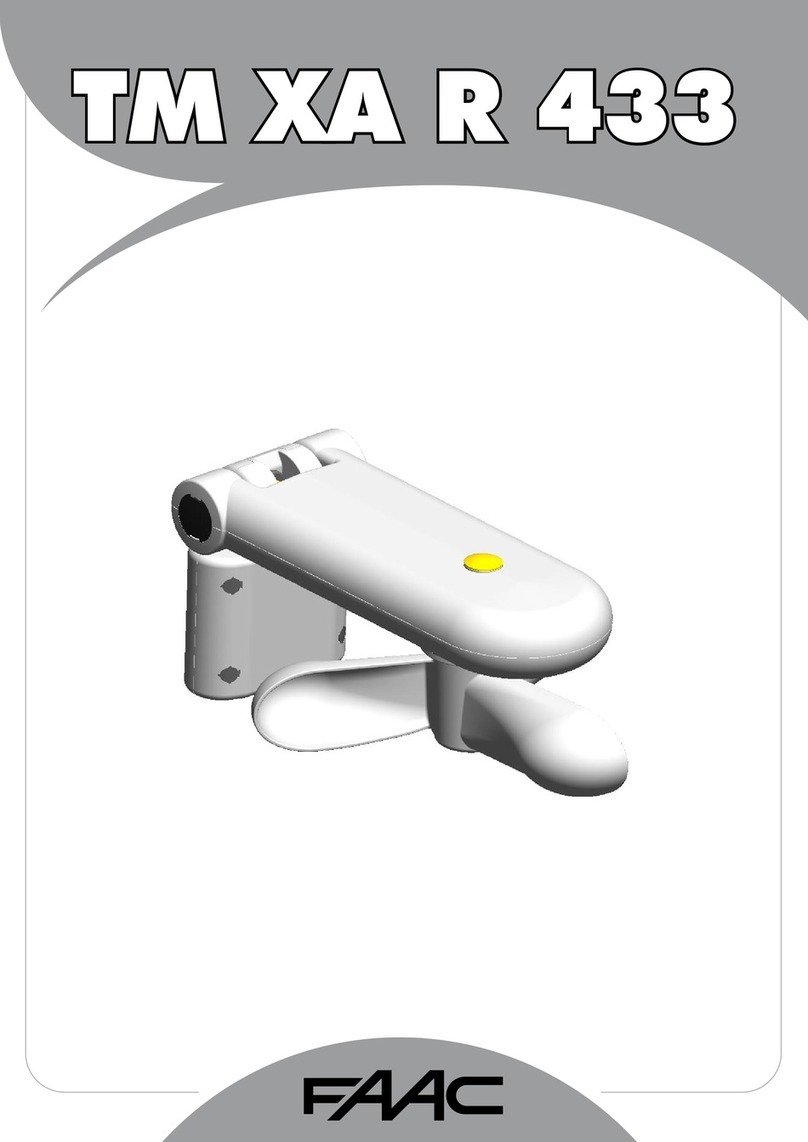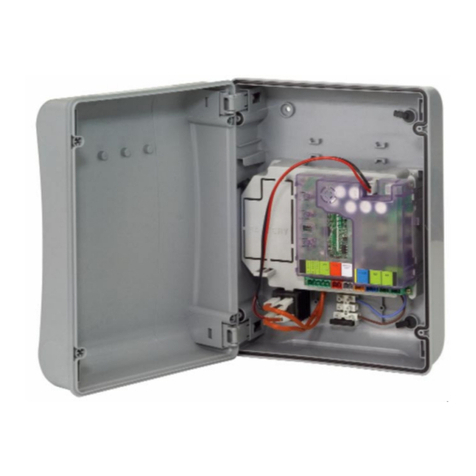
2
FRANÇAIS
3 MEMORIZZAZIONE DEI RADIOCOMANDI
Sur l’armoire XR2 C peut coexister au maximum
un type de codage radio
(DS, SLH, LC) .
On peut mémoriser maxi 250 codes répartis entre
les canaux 1 et 2
3 MÉMORISATION DES RADIOCOMMANDES
3.1
MÉMORISATION DES RADIOCOMMANDES
DS
3.2 MÉMORISATION DES RADIOCOMMANDES SLH
1) Sur la radiocommande SLH master, appuyer,
en les maintenant enfoncés, simultanément sur les
boutons-poussoirs P1 et P2.
2) La LED de la radiocommande commencera à clignoter
(pendant environ 10 s).
3) Relâcher les deux boutons.
4) Appuyer, pendant 1 seconde, sur le bouton-poussoir du
récepteur (Fig.1 réf. 6), correspondant au canal auquel
on souhaite associer la radiocommande.
5) La LED correspondante sur le récepteur (Fig.1 réf. 5)
commence à clignoter lentement pendant 5 s.
6) Pendant ces 5 s, tandis que la LED de la radiocommande
est encore en train de clignoter, appuyer, en le
maintenant enfoncé, sur le bouton-poussoir souhaité
de la radiocommande (la LED de la radiocommande
s’allumera fixe).
7) La LED sur la platine (Fig.1 réf. 5) s’allumera fixe
pendant 1 seconde, puis elle s’éteindra, indiquant que
la mémorisation a été effectuée.
8) Relâcher le bouton-poussoir de la radiocommande.
9) Appuyer 2 fois sur le bouton-poussoir de la
radiocommande mémorisée, en une brève succession.
La carte enverra une commande à la sortie
associée au canal.
10) Pour ajouter d’autres radiocommandes, transférer
le code du bouton-poussoir de la radiocommande
mémorisée vers le bouton-poussoir correspondant des
radiocommandes à ajouter, en procédant comme suit:
a) Sur la radiocommande mémorisée, appuyer,
en les maintenant enfoncés, simultanément sur les
boutons-poussoirs P1 et P2.
b) La LED de la radiocommande commencera à
clignoter.
c) Relâcher les deux boutons-poussoirs.
d) Appuyer sur le bouton-poussoir mémorisé et le maintenir
enfoncé (la LED de la radiocommande s’allumera fixe).
e) Rapprocher les radiocommandes, appuyer, en le
maintenant enfoncé, sur le bouton-poussoir correspondant de
la radiocommande à ajouter, ne le relâcher qu’après le double
clignotement de la LED de la radiocommande indiquant que
l’apprentissage a eu lieu.
- Appuyer 2 fois sur le bouton-poussoir de la nouvelle
radiocommande mémorisée, en une brève succession.
La carte enverra une commande à la sortie
associée au canal.
3.3 MÉMORISATION DES RADIOCOMMANDES LC
1) Appuyer, pendant 1 seconde, sur le bouton-poussoir du
récepteur (Fig.1 réf. 6), correspondant au canal auquel
on souhaite associer la radiocommande.
2) La LED correspondante sur le récepteur (Fig.1 réf. 5),
commence à clignoter lentement pendant 5 s.
3) Pendant ces 5 s, appuyer sur le bouton-poussoir souhaité
de la télécommande LC.
5) La LED sur le récepteur (Fig.1 réf. 5) s’allumera fixe
pendant 1 seconde, indiquant que la mémorisation
a été effectuée, puis elle recommencera à clignoter
pendant 5 s supplémentaires durant lesquelles on peut
mémoriser une autre radiocommande.
5) Au bout des 5 s, la LED s’éteint indiquant la fin de la
procédure.
6) Pour mémoriser d’autres radiocommandes, répéter la
procédure précédente
Si l’on souhaite procéder en mode à distance (sans ouvrir
le coffret du récepteur) procéder comme suit:
a) Prendre une radiocommande déjà mémorisée.
b) Appuyer, en les maintenant enfoncés, simultanément
sur les boutons-poussoirs P1 et P2 jusqu’à ce que la LED
(Fig.1 réf. 5) clignote sur la platine du récepteur.
c) La LED clignotera lentement pendant 5 s.
d) Dans un délai de 5 s, appuyer sur le bouton-poussoir
mémorisé précédemment de la radiocommande
pour activer la phase d’apprentissage sur le canal
sélectionné.
e) La LED sur la platine correspondant au canal
en apprentissage, clignote pendant 5 s durant
lesquelles on doit transmettre le code d’une autre
radiocommande.
f) La LED (Fig.1 réf. 5) s’allume fixe pendant 2 s,
indiquant que la mémorisation a été effectuée, puis
elle recommencera à clignoter pendant 5 s durant
lesquelles on peut répéter le point “e”, et les points
successifs, pour d’autres télécommandes, puis elle
s’éteindra
Le codage radio LC n’est disponible que sur certains
marchés et uniquement pour le récepteur XR2 433C
.
1) Pour effacer TOUS les codes des radiocommandes
associés aux canaux 1et 2, il suffit de maintenir le
bouton-poussoir SW1 ou SW2 enfoncé (Fig.1 réf. 6),
pendant 10 s.
2) La LED (Fig.1 réf. 5) correspondant au bouton-poussoir
enfoncé clignote pendant les 5 premières secondes,
puis le clignotement s’accélère pendant les 5 secondes
suivantes.
3) La LED s’allume fixe pendant 2 s, puis elle s’éteindra.
4) Relâcher le bouton-poussoir enfoncé au moment où
la LED correspondante s’allume fixe.
4 EFFACEMENT DE TOUTES LES RADIOCOMMANDES
Cette opération N’est PAS réversible.
1) Sur la radiocommande DS, choisir la combinaison
ON - OFF souhaitée des 12 DIP-SWITCHES.
2) Appuyer, pendant 1 seconde, sur le bouton-poussoir du
récepteur (Fig.1 réf.6), correspondant au canal auquel
on souhaite associer la radiocommande.
3) La LED correspondante sur le récepteur (Fig.1 réf. 5)
commence à clignoter lentement pendant 5 s.
4) Pendant ces 5 s, appuyer sur le bouton-poussoir souhaité
sur la radiocommande.
5) La LED (Fig.1 réf. 5) sur le récepteur s’allumera fixe
pendant 1 seconde, puis elle s’éteindra, indiquant que
la mémorisation a été effectuée.
La carte enverra une commande à la sortie
associée au canal.
6) Pour ajouter d’autres radiocommandes, sélectionner la
même combinaison ON - OFF utilisée au point 1).












